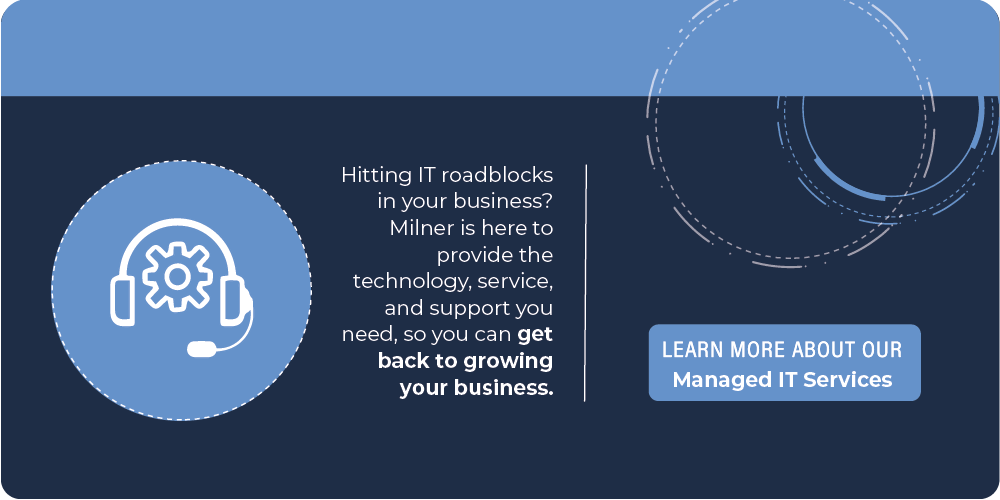
Jan 13, 2022
The cost of protecting your company's most sensitive assets often seems to have no limit, but very few of us have an unlimited IT budget. How can you know where to realistically start with your IT budget, specifically when it comes to managed services? With cybercrime and cybersecurity evolving at an accelerated pace, how can you ensure you're getting the highest return on investment?
Keeping an eye on the trends for investment in managed resources for 2022 can help you ensure your company is spending its money in the right places. According to Spiceworks Ziff Davis, IT spending is expected to increase in 2022, and by a relatively significant amount. The percentage of IT expenditures allocated to hosted and cloud-based services has increased over the past two years as more organizations migrate applications and services away from on-premises data centers, from 22% in 2020 to 26% in 2022. In line with this increase, hardware, which has historically held the lion’s share of IT budgets, has decreased at around the same rate: from 33% in 2020 to 30% in 2022.
Due to these predicted trends, businesses are expected to invest less in software and more in managed IT services, with budgets that are likely to rise to about 17% of SMB budgets and 21% of enterprise budgets in 2022. The largest portions of these budgets are expected to be allocated to:
Below are the top five categories into which companies are increasing their budgets for managed services:
Security management services will experience a sharp spike in interest as well as the ongoing pandemic continues to drive many workers to work remotely or via a hybrid model. As a result, businesses are seeking methods to safeguard their employees alongside sensitive company assets, no matter where they are or what devices they utilize. And as ransomware attacks continue their havoc companies will need to rethink their investment in emerging security solutions.
It is estimated that between 80 to 95% of all cybersecurity breaches are caused by an employee unknowingly making a mistake, which is why it is imperative that your employees are trained as your first line of defense. For maximum benefit, your employee security training tools should cover the following topics:
Adding additional security to help mitigate employee error provides your company with another layer of protection. Hardware authentication is one such tool for that purpose. As an alternative to traditional user authentication, hardware authentication relies on a dedicated physical device (such as a token) held by the user to grant access to computer resources. This required device generates a unique, temporary code that, combined with the user’s unique password, creates a 2-factor authentication (2FA) or multifactor authentication (MFA) system. With this extra protective measure in place, a hacker cannot access your network or systems simply with a password.
Another way to add extra protection for your business is to invest in anti-ransomware solutions. As opposed to repairing damage caused by ransomware, anti-ransomware works as a preventative measure to prevent your network from falling victim to malware. Software that provides the best ransomware protection will not only stop your computer or other device from getting infected, but will also block malware from changing files and folders on your computer or device. Many of the best antivirus and anti-malware programs will protect you against ransomware, but you’ll want to make sure this is the case before you commit to using any program.
An information breach is a nightmare scenario, which is why organizations that value their information will put smart people and technologies to work as a defensive wall against anyone who might go after your data. Even with the best systems in place, however, security must remain an ongoing effort, not a given. This is where threat detection services come in. Managed security programs must detect threats quickly and efficiently so cybercriminals don’t have much time to find your sensitive data, and they must be able to detect both known and unknown threats.
Lastly, one of the most important places to budget for managed services is in a Zero Trust framework which promotes a significant departure from traditional network security philosophies that followed the “trust but verify” method. Instead of automatically trusting users and endpoints within an organization’s perimeter, the Zero Trust framework continuously validates users and their devices’ requests for access to assets, no matter who they are.
Zero Trust ensures that three key principles are be followed:
Stay ahead of cyber threats and ensure your company’s managed services are giving you the most return on your budgeted investment. Contact Milner today.
